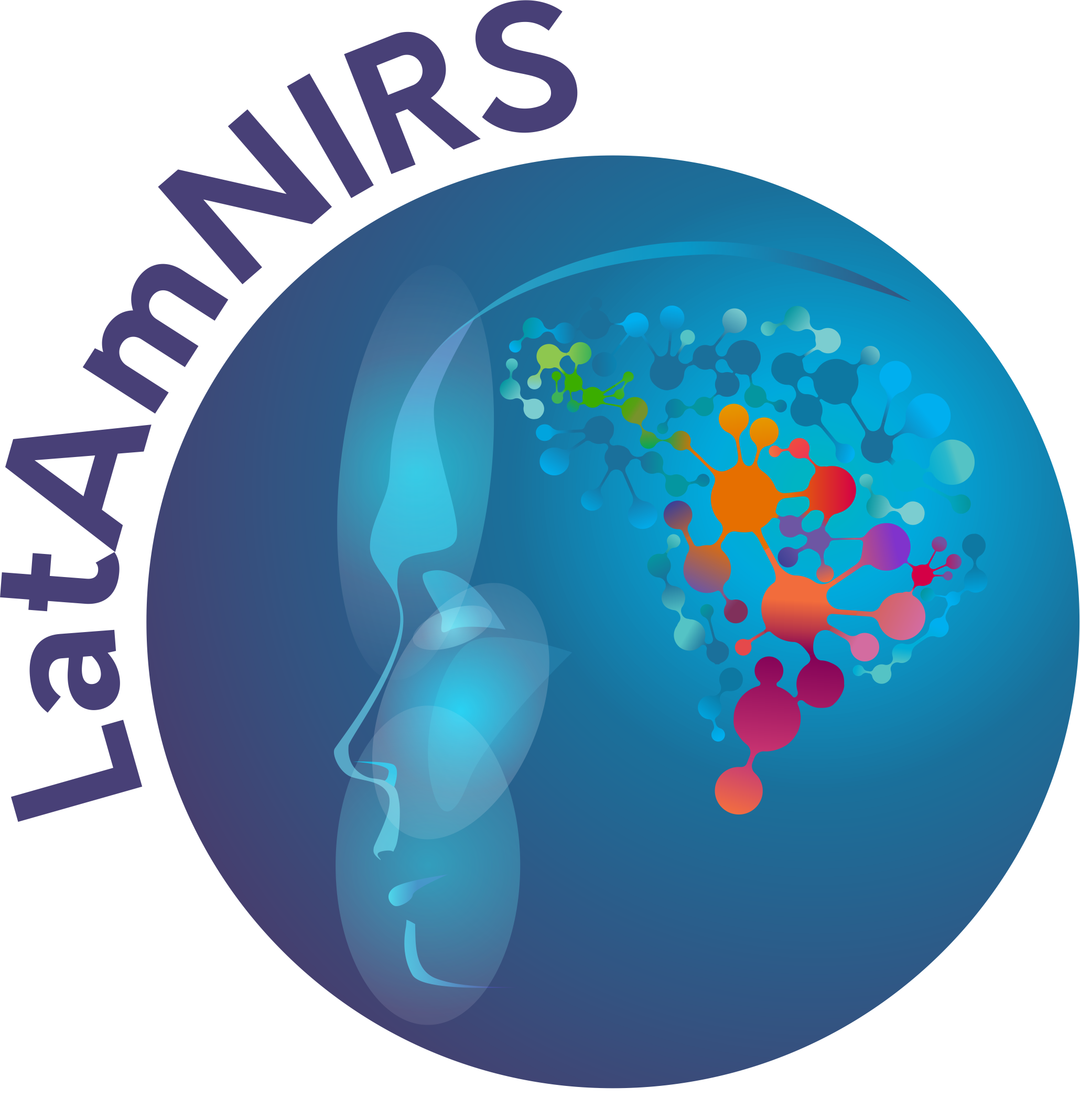Oxidation state of the cytochrome-c-oxidase
Definition: The enzyme cytochrome-c-oxidase (CCO) is a transmembrane protein in mitochondria – a vital cell organelle – and the last part of the respiratory electron transport chain. As such CCO is a central component to maintain the electrochemical transmembrane gradient of mitochondria, which is needed for the core enzyme involved in energy supply of cells, the ATP-Synthase. Changes in cellular oxygen utilization can be measured by the oxidation state of CCO. Specifically, the oxidation state of CCO (oxCCO) can be detected using multi-wavelength or broadband NIRS. In fact, one of the copper sites of CCO dominates the absorption spectrum in the NIR region, with a strong peak in the oxidized form centered around 830 to 840 nm. The difference between these absorption spectra (oxidized-reduced CCO) can be used to monitor changes in the redox states of the mitochondrial proteins as a prox of brain metabolism. In contrast to changes in hemoglobin oxygenation, oxCCO is cell-specific and not affected by systemic, extracerebral fluctuations. It is thus considered a more specific indicator of brain activity compared to oxygenated or deoxygenated hemoglobin concentrations.
Alternative definition: The enzyme cytochrome c oxidase (CCO) or Complex IV, classified as a translocase EC 7.1.1.9), is a large transmembrane protein complex composed of several metal prosthetic sites and 14 protein subunits. It is the last enzyme in the respiratory electron transport chain of cells, and it is located in the inner mitochondrial membrane. It receives an electron from each of four cytochrome c molecules and transfers them to one oxygen molecule and four protons, producing two molecules of water. The transfer of electrons within the mitochondrial electron transport chain complexes occurs via several proteins bound redox factors. CCO contains four redox centers: two hems (known collectively as aa3) and two copper sites. The electrons pass between these centers in a series of redox reactions. All these redox changes have associated optical transitions. In the NIR region, one of the copper sites, the Cu-Cu dimer copper A (CuA), dominates the absorption spectrum, with a strong peak in the oxidized form centered around 830 to 840 nm. The difference between these absorption spectra (oxidized-reduced CCO) can be used to monitor changes in the redox states of the mitochondrial proteins. Total CCO concentration does not change over a short-time period (in the order of hours); therefore, for analytical purposes, it is only necessary to use the difference spectrum between the oxidized and reduced species to obtain an indicator of the changes in the CCO redox state.
Synonym:
References: https://doi.org/10.1007/978-3-319-55231-6_19; https://doi.org/10.1117/1.JBO.21.9.091307
Related terms: bNIRS
